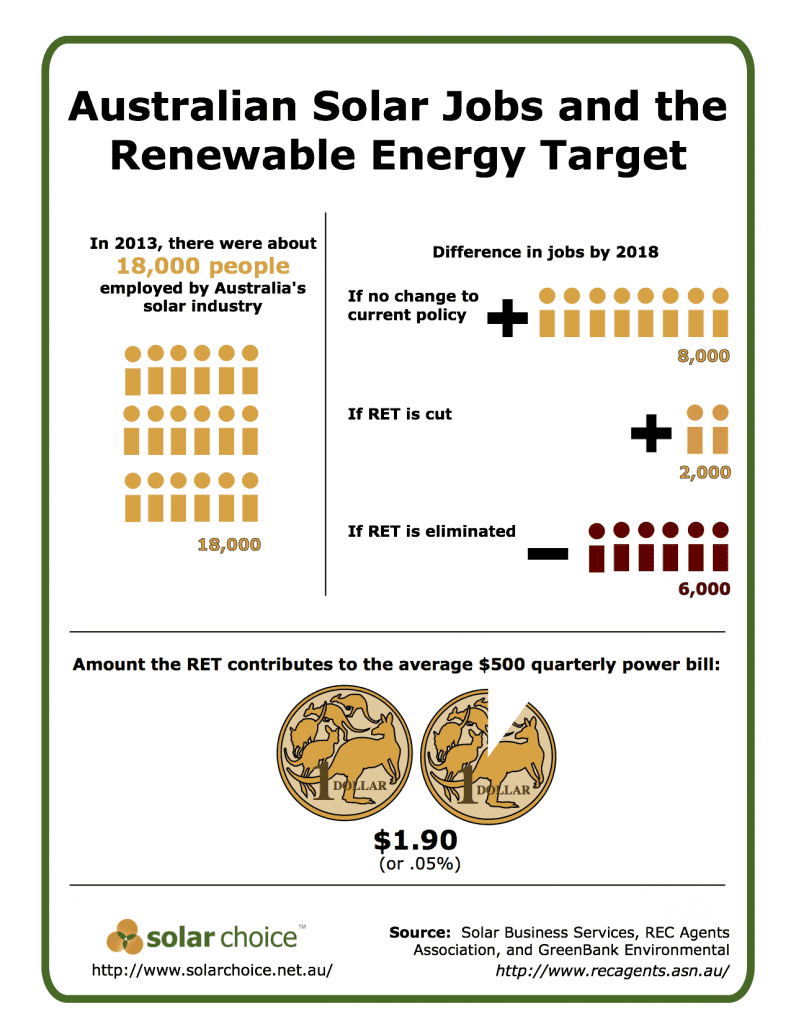The review of the federal Renewable Energy Target is now officially underway–and it will be ‘extensive’. The government, having made clear on numerous occasions its intentions of eliminating ‘green tape’ in not so many words, is now making good on its promises of a thorough review of the RET. There are fears that the review could entail a total evisceration of the scheme, with one senior Liberal member telling the ABC that the review will be a “cover” to “kill the RET”. The review is scheduled to be completed by mid-2014.
Indicative of the government’s sentiment towards the RET is the fact that former Reserve Bank chairman and alleged climate change sceptic Dick Warburton has been put in charge of the 4-person panel that will conduct review. It is unsurprising that the review will focus in large part on the price impacts that the RET is having on power bills and industry; the Prime Minister and a number of other government figures have made clear their belief that the scheme is driving up electricity prices exorbitantly and unnecessarily (it is not). According the review’s Terms of Reference (emphasis added):
The review is to examine the operation and costs and benefits of the Renewable Energy (Electricity) Act 2000 (‘the Act’) and related legislation and regulations, and the RET scheme constituted by these instruments. This includes considering:
1. the economic, environmental and social impacts of the RET scheme, in particular the impacts on electricity prices, energy markets, the renewable energy sector, the manufacturing sector and Australian households;
2. the extent to which the formal objects of the Act are being met; and
3. the interaction of the RET scheme with other Commonwealth and State/Territory policies and regulations, including the Commonwealth Government’s commitment to reduce business costs and cost of living pressures and cut red and green tape, and the Direct Action policies under development.
The no-holds-barred approach that the government appears prepared to take means that even the current target itself (20% of Australia’s electricity sourced from renewables by 2020) will be questioned–something alluded to in the media even before the release of the Terms of Reference. Mr Hunt said the terms of reference focused on measuring the progress of the RET in three ways – against the initial 20% objective, in terms of investment certainty and with regard to the scheme’s relationship to electricity prices. Minister for Industry Ian Macfarlane has also stated that the review will be a ‘complete’ and ‘extensive’ one. From the Terms of Reference (emphasis added).
The review should provide advice on:
1. whether the objective of the RET scheme, to deliver 41,000 gigawatt hours (GWh) and small scale solar generation by 2020, is still appropriate;
2. the extent of the RET’s impact on electricity prices, and the range of options available to reduce any impact while managing sovereign risk;
3. the operation of the small-scale and large-scale components of the RET and their interaction;
4. implications of projected electricity demand for the 41,000 (GWh) target; and
5. implementation arrangements for any proposed reforms to the RET, including how to manage transition issues, risks and any adjustment costs that may arise from policy changes to the RET.
Renewable energy advocates and solar industry members see the government’s campaign against the RET as little more than a witch hunt whose impetus does not lie in facts but in unfounded negative sentiment against renewables. Doubtless the review will come to its own conclusions regardless, but it the ball is also in the renwables industry’s court to take the case for the RET to the public.
To this end, the Australian solar industry has been rallying troops in support of keeping the scheme as it is–or at least minimising the impact that the review will have on it. Although the Australian Solar Council is leading the way, with its ‘Save the RET’ campaign having already been launched, the announcement that the review has now begun heightens the sense of urgency felt by the industry.
Other useful resources:
-Compare fossil fuel subsidies to renewable ones on PaidtoPollute.org.au (hint: fossil fuels get more)
-Nigel Morris of Solar Business Services has also published an extensive piece detailing the RET’s background, its associated costs, and (possibly most importantly), what renewable energy supporters can do to help.
-The Clean Energy Council likewise has a page devoted to information on the RET.
–100% Renewables / Solar Citizens emailed their members & followers with a link to the directory for federal MPs & senators & the exhortation to contact them to voice their support for the scheme; they also included a list of quick facts (& questions for politicians) about it:
Need some points on the RET? Here are the facts on the RET:
The RET is bringing jobs and investment to Australia. The Renewable Energy Target has already attracted $18.5 billion in new investment to Australia, with the potential for $18.7 billion more if the government leaves the scheme alone – creating 30,000 new jobs along the way – many of them in regional and rural areas.
The RET costs on average $1 a week, whereas over spending on network poles and wires and traditional energy costs families around $32 a week. So, why aren’t you focusing on the solving the real reasons behind power price rises?
The RET panel is made up of representatives that are deeply engrossed in the traditional fossil-fuel economy and not known supporters of renewables. Why is the board not representative of the voices of the Australian community, who want more renewables?
Over 130 countries around the world now have domestic policies in place to encourage renewable energy investment. Why would Australia change a policy that’s working and makes us reputable on the international stage?
© 2014 Solar Choice Pty Ltd
